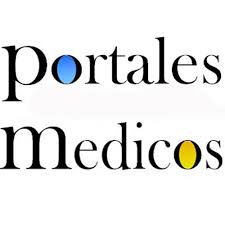Sensibilidad y especificidad de la tomografía computarizada de haz cónico en el diagnostico de necrosis pulpar
Resumen
DOI: https://doi.org/10.53766/AcBio/2025.15.29.08
Introducción: conocer las características de la periodontitis apical visibles en las imágenes de una cbct, pero no detectadas en las radiografías periapicales, es esencial para mejorar la certeza diagnóstica de diversas patologías. Objetivo: Evaluar sensibilidad y especificidad diagnóstica de la radiografía periapical convencional en comparación con la cbct en la identificación de lesiones periapicales. Metodología: estudio descriptivo de prueba diagnóstica en individuos que asistieron para consulta endodóntica en la facultad de odontología de la Universidad de Cartagena del periodo 2022-2. Para la selección de los individuos se tuvo en cuenta la radiografía inicial, el diagnóstico de necrosis pulpar y que estos aceptaran su participación en el proyecto a través de la firma de un consentimiento informado y formato de historia clínica. La evaluación de las radiografías periapicales y las CBCT fueron examinadas por un evaluador calibrado, siguiendo parámetros específicos. Posteriormente se realiza un análisis de prueba diagnóstica teniendo en cuenta una tabla de contingencia para determinar la sensibilidad, especificidad, valor predictivo positivo y valor predictivo negativo. Resultados: Un 57 % de las tomografías se observó lesión periapical mientras que en la radiografía periapical solo 14 %. El análisis arrojó que la radiografía periapical tiene solo un 25 % de sensibilidad diagnóstica, sin embargo, tiene un 100% de especificidad para descartar la presencia de lesiones. Conclusión: la radiografía periapical no brinda la mayor certeza en el diagnóstico de necrosis pulpar, por lo cual la CBCT brinda mejores resultados diagnósticos que aportan significativamente al tratamiento y pronóstico de recuperación periapical.
Recibido: 04/07/2024
Aceptado: 03/08/2024
Palabras clave
Texto completo:
PDFReferencias
Saidi A, Naaman A, Zogheib C. Accuracy of Cone-beam Computed Tomography and Periapical Radiography in Endodontically Treated Teeth Evaluation: A Five-Year Retrospective Study. J Int Oral Health JIOH. 2015;7(3):15-9.
Abella F, Patel S, Duran-Sindreu F, Mercadé M, Bueno R, Roig M. Evaluating the Periapical Status of Teeth with Irreversible Pulpitis by Using Cone-beam Computed Tomography Scanning and Periapical Radiographs. J Endod. 2012;38(12):1588-91.
Paula-Silva FWG de, Wu MK, Leonardo MR, Bezerra da Silva LA, Wesselink PR. Accuracy of Periapical Radiography and Cone-Beam Computed Tomography Scans in Diagnosing Apical Periodontitis Using Histopathological Findings as a Gold Standard. J Endod. 2009;35(7):1009-12.
Andreasen JO, Rud J. Correlation between histology and radiography in the assessment of healing after endodontic surgery. Int J Oral Surg. 1972;1(3):161-73.
Ordinola-Zapata R, Bramante CM, Graeff MSZ, del Carpio Perochena A, Vivan RR, Camargo EJ, et al. Depth and percentage of penetration of endodontic sealers into dentinal tubules after root canal obturation using a lateral compaction technique: A confocal laser scanning microscopy study. Oral Surg Oral Med Oral Pathol Oral Radiol Endodontology. 2009;108(3):450-7.
Bender IB, Seltzer S. Roentgenographic and direct observation of experimental lesions in bone: I. J Am Dent Assoc. 1961;62(2):152-60.
Huumonen S, Ørstavik D. Radiological aspects of apical periodontitis: Radiological aspects of apical periodontitis. Endod Top. 2002;1(1):3-25.
Lofthag-Hansen S, Huumonen S, Gröndahl K, Gröndahl HG. Limited cone-beam CT and intraoral radiography for the diagnosis of periapical pathology. Oral Surg Oral Med Oral Pathol Oral Radiol Endodontology. 2007;103(1):114-9.
Petersson A, Axelsson S, Davidson T, Frisk F, Hakeberg M, Kvist T, et al. Radiological diagnosis of periapical bone tissue lesions in endodontics: a systematic review: Diagnosis periapical lesions. Int Endod J. 2012;45(9):783-801.
Patel S. New dimensions in endodontic imaging: Part 2. Cone beam computed tomography. Int Endod J. 2009;42(6):463-75.
de Paula-Silva FWG, Júnior MS, Leonardo MR, Consolaro A, da Silva LAB. Cone-beam computerized tomographic, radiographic, and histologic evaluation of periapical repair in dogs’ post-endodontic treatment. Oral Surg Oral Med Oral Pathol Oral Radiol Endodontology. 2009;108(5):796-805.
Jang YE, Kim BS, Kim Y. Clinical Factors Associated with Apical Periodontitis Visible on Cone-beam Computed Tomography but Missed with Periapical Radiographs: A Retrospective Clinical Study. J Endod. 2020;46(6):832-8.
Lips M. ALARA in practice—4 decades of radiological protection at Goesgen NPP. J Radiol Prot. 1 2021;41(4):S297-305.
Huumonen S, Kvist T, Grondahl K, Molander A. Diagnostic value of computed tomography in re-treatment of root fillings in maxillary molars. Int Endod J. 2006;39(10):827-33.
Tachibana H, Matsumoto K. Applicability of X-ray computerized tomography in endodontics. Dent Traumatol. 1990;6(1):16-20.
Torres MB. [Radiology in endodontics. Roentgenographic techniques (author’s transl)]. Rev Bras Odontol. 1976;33(4):221-7.
Patel S, Brown J, Pimentel T, Kelly RD, Abella F, Durack C. Cone beam computed tomography in Endodontics - a review of the literature. Int Endod J. 2019;52(8):1138-52.
Ali AS, Fteita D, Kulmala J. Comparison of physical quality assurance between Scanora 3D and 3D Accuitomo 80 dental CT scanners. Libyan J Med. 2015;10(1):28038.
Lo Giudice R, Nicita F, Puleio F, Alibrandi A, Cervino G, Lizio AS, et al. Accuracy of Periapical Radiography and CBCT in Endodontic Evaluation. Int J Dent. 2018;2018:2514243.
Woelber JP, Fleiner J, Rau J, Ratka-Krüger P, Hannig C. Accuracy and Usefulness of CBCT in Periodontology: A Systematic Review of the Literature. Int J Periodontics Restorative Dent. 2018;38(2):289-97.
Tzanetakis GN, Giannakoulas DG, Papanakou S, Gizani S, Lygidakis N. Regenerative endodontic therapy of immature permanent molars with pulp necrosis: a cases series and a literature review. Eur Arch Paediatr Dent Off J Eur Acad Paediatr Dent. 2021;22(3):515-25.
Ricucci D, Loghin S, Siqueira JF. Correlation between clinical and histologic pulp diagnoses. J Endod. 2014;40(12):1932-9.
Mota de Almeida FJ, Hassan D, Nasir Abdulrahman G, Brundin M, Romani Vestman N. CBCT influences endodontic therapeutic decision-making in immature traumatized teeth with suspected pulp necrosis: a before-after study. Dento Maxillo Facial Radiol. 2021;50(8):20200594.
Leonardi Dutra K, Haas L, Porporatti AL, Flores-Mir C, Nascimento Santos J, Mezzomo LA, et al. Diagnostic Accuracy of Cone-beam Computed Tomography and Conventional Radiography on Apical Periodontitis: A Systematic Review and Meta-analysis. J Endod. 2016;42(3):356-64.
Lima SMF, Grisi DC, Kogawa EM, Franco OL, Peixoto VC, Gonçalves-Júnior JF, et al. Diabetes mellitus and inflammatory pulpal and periapical disease: a review. Int Endod J. 2013;46(8):700-9.
Alsamahi S, Milne TM, Hussaini H, Rich AM, Friedlander LT. Type 2 diabetes and the clinically normal pulp: An in vitro study. Int Endod J. 2022;55(6):660-71.
Mateus JC, Varela MT, Caicedo DM, Arias NL, Jaramillo CD, Morales LC, et al. ¿Responde la Resolución 8430 de 1993 a las necesidades actuales de la ética de la investigación en salud con seres humanos en Colombia? Biomédica. 2019;39(3):448-63.
Estrela C, Bueno MR, Azevedo BC, Azevedo JR, Pécora JD. A New Periapical Index Based on Cone Beam Computed Tomography. J Endod. 2008;34(11):1325-31.
Participants of the 2006 Human Variome Project meeting, Cotton RGH. Recommendations of the 2006 Human Variome Project meeting. Nat Genet. 2007;39(4):433-6.
DOI: https://www.doi.org/10.53766/AcBio/Se encuentra actualmente indizada en: | |||
 |  |  | |
  |  |  |  |
 |  |  |  |
 |  |  | |
![]()
Todos los documentos publicados en esta revista se distribuyen bajo una
Licencia Creative Commons Atribución -No Comercial- Compartir Igual 4.0 Internacional.
Por lo que el envío, procesamiento y publicación de artículos en la revista es totalmente gratuito.



